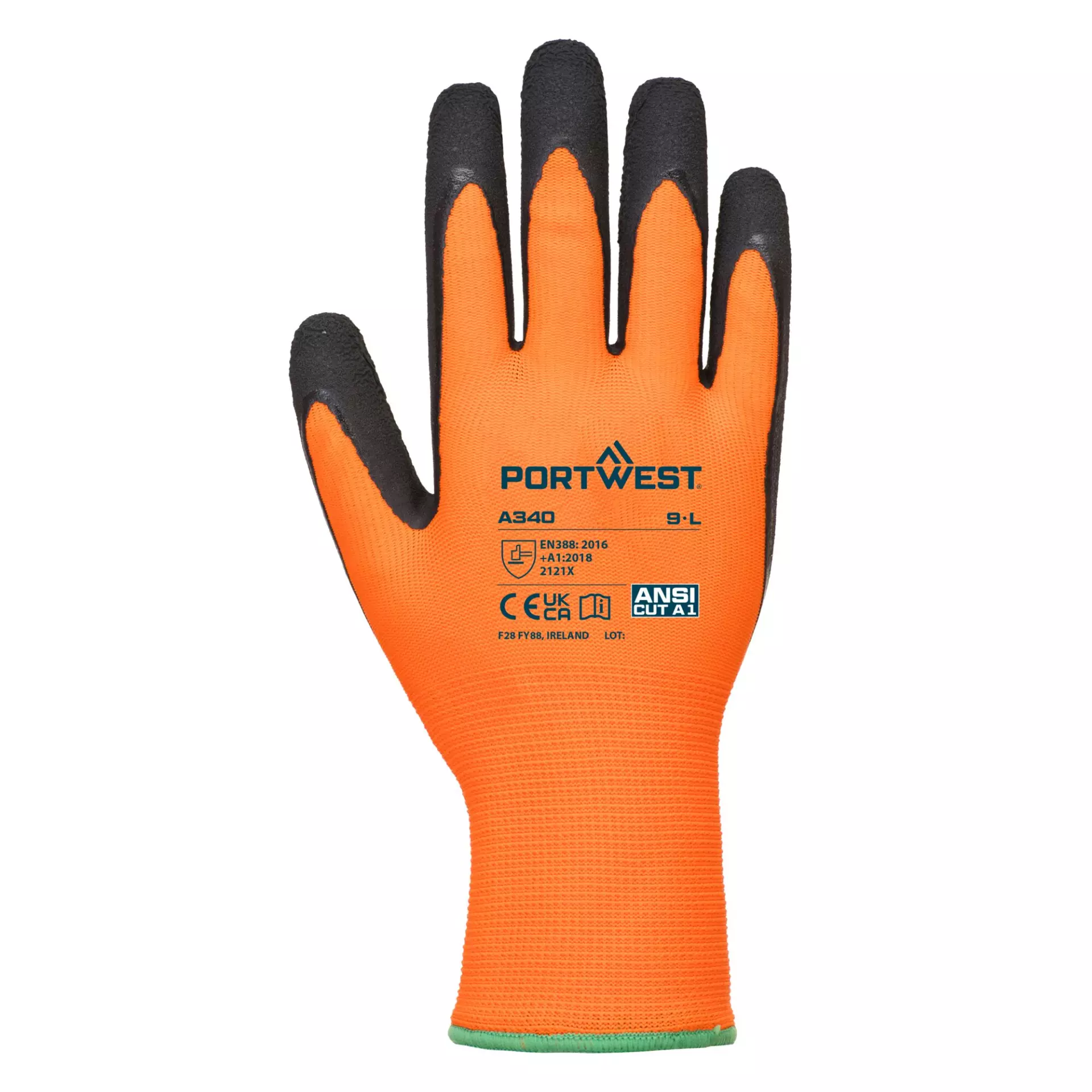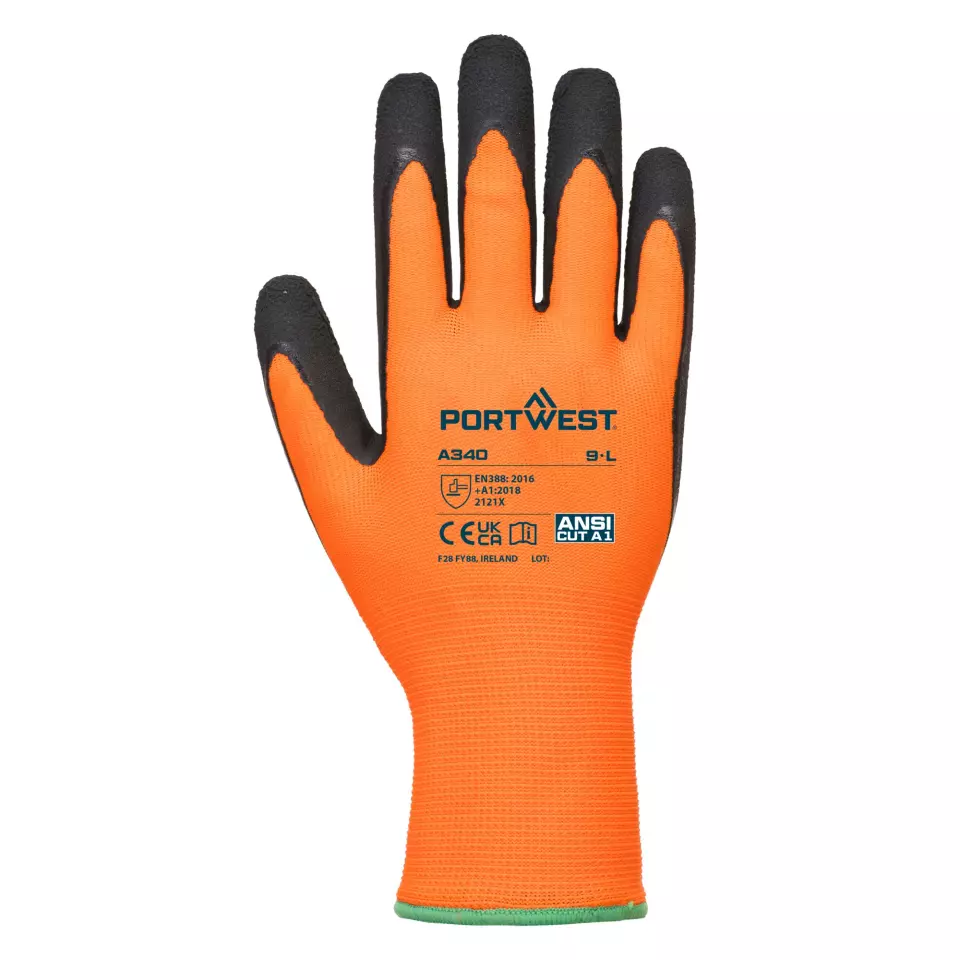

Features You'll Love

Gauge · 13
Refers to the knit density of the glove fabric, affecting dexterity, comfort, and durability. Higher numbers provide better finger movement and sensitivity.

EN 388 · Puncture Resistance Level 1, Abrasion Resistance Level 2, Tear Resistance Level 2
Provides basic protection against punctures from blunt objects like splinters, not sharp points like needles.
Withstands moderate rubbing and friction, offering good protection for tasks involving handling rough materials.
Offers moderate resistance against snagging or catching on rough objects, preventing small rips from growing.
Portwest
Hi-Vis Grip Glove - Latex, Orange/Black, 12 pairs
Hi-Vis Grip Glove - Latex, Orange/Black, 12 pairs
4.5 / 5
37,24 €
Price per 12 pairs
3,10 € / pair
Choose size
Shipping fee is 7,95 € for orders under 80,00 €
Features You'll Love

Gauge · 13
Refers to the knit density of the glove fabric, affecting dexterity, comfort, and durability. Higher numbers provide better finger movement and sensitivity.

EN 388 · Puncture Resistance Level 1, Abrasion Resistance Level 2, Tear Resistance Level 2
Provides basic protection against punctures from blunt objects like splinters, not sharp points like needles.
Withstands moderate rubbing and friction, offering good protection for tasks involving handling rough materials.
Offers moderate resistance against snagging or catching on rough objects, preventing small rips from growing.
Product description
These high-visibility work gloves feature advanced latex foam coating technology for superior grip performance in both wet and dry conditions. The 13-gauge polyester liner construction provides durability and precise fitting, while the palm-dipped design enhances dexterity and ventilation. With an open back design for breathability and high-visibility liner for safety, these gloves are suitable for various work environments and available in sizes appropriate for both adults and children.
Product Features:
- Latex foam coating for excellent grip in wet and dry conditions
- High visibility liner for enhanced safety
- 13 gauge liner constructed for durability and precise fitting
- Palm dipped to increase dexterity and ventilation
- Open back for breathability
Technical Details:
- Polyester liner material for strength and durability
- Latex natural rubber coating with high elasticity and comfort
- Suitable for children in smaller sizes (4, 5, 6)
- CE certified
Standards:
- EN ISO 21420:2020 Dexterity 5
- EN 388:2016 + A1:2018 (2121X)
- ANSI/ISEA 105:2016 CUT Level (A1)
- ANSI/ISEA 105:2016 ABRASION Level (3)